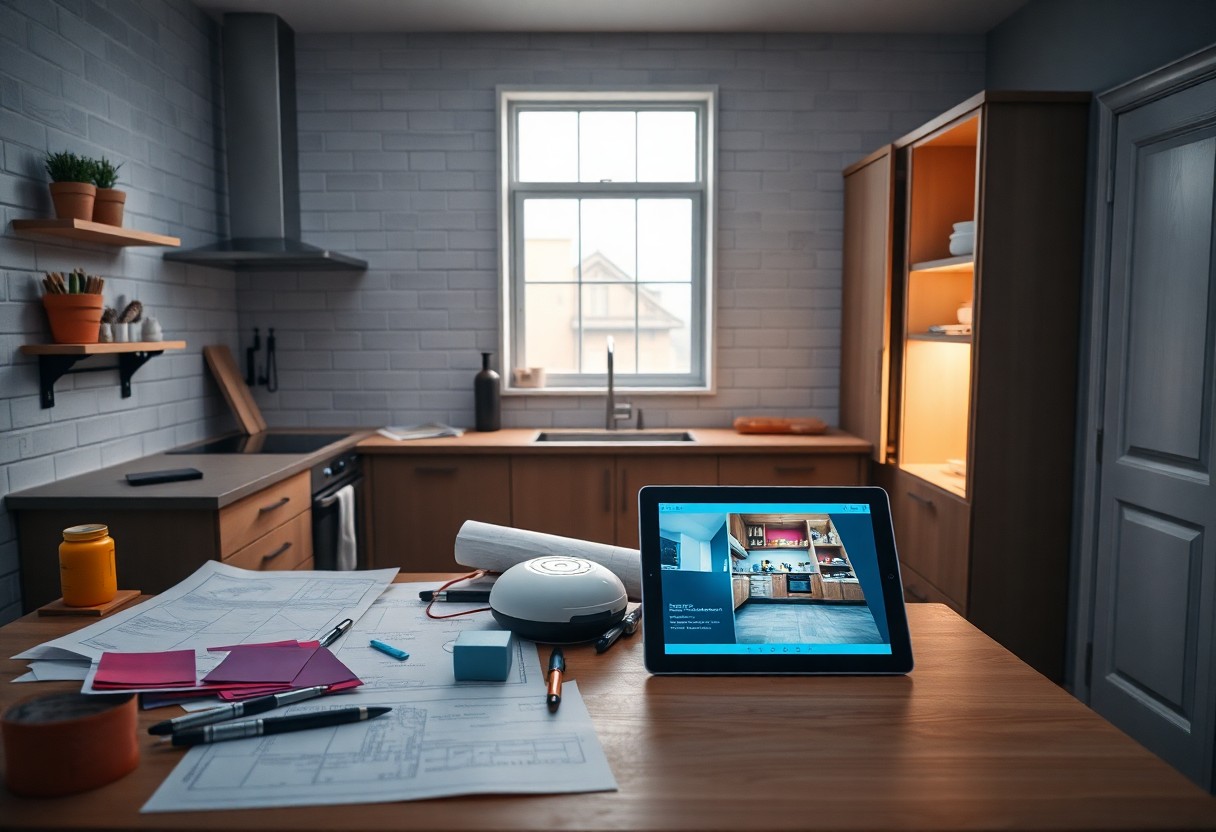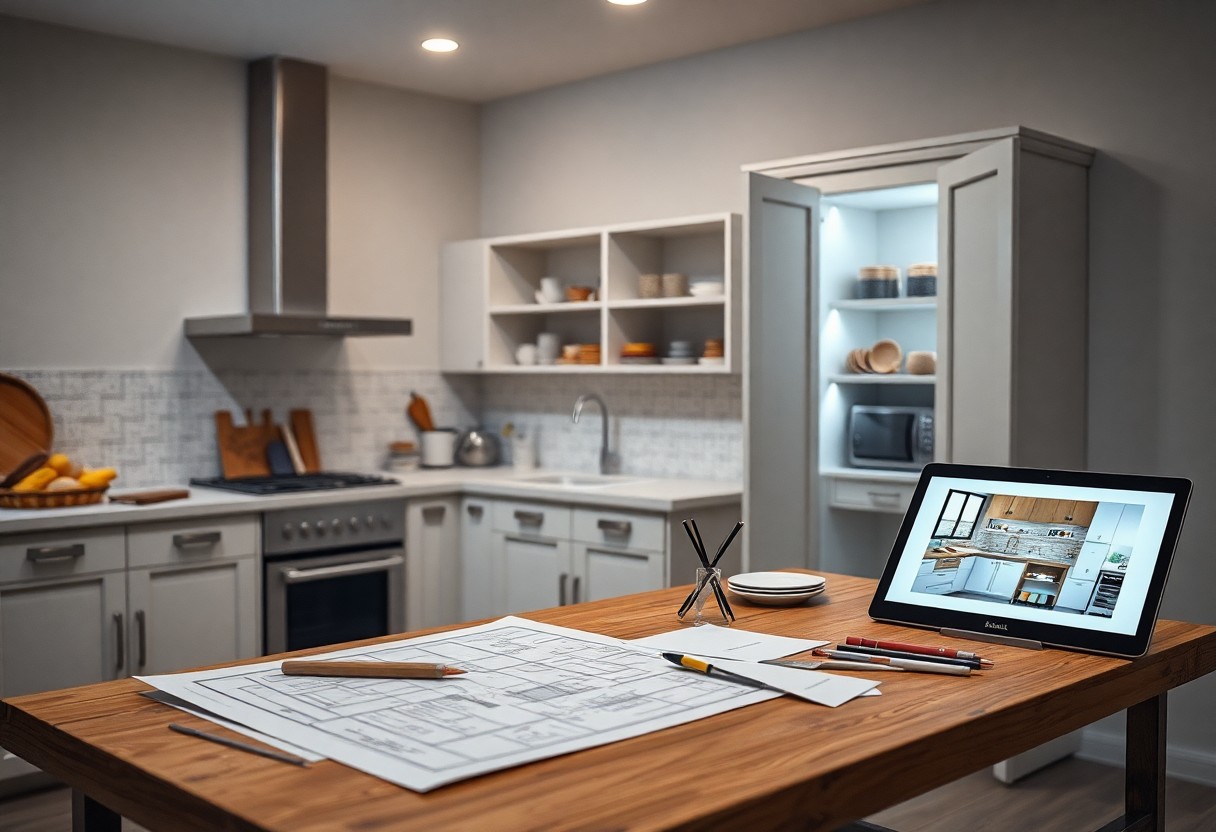Many homeowners in Hamilton face the daunting task of renovating their kitchens, a space that serves as the heart of the home. In this guide, I will walk you through each step of the process, from planning and design to execution and final touches. By breaking it down into manageable phases, you’ll learn how to streamline your renovation to achieve the kitchen of your dreams without unnecessary stress or delays. Let’s get started on transforming your kitchen into a functional and beautiful space tailored to your lifestyle.
Planning Your Renovation
The first step in an efficient kitchen renovation is meticulous planning. I encourage you to take your time during this phase, as it lays the groundwork for the entire project. By defining your goals, gathering inspiration, and considering functionality, you can create a solid foundation that will guide your decisions throughout the renovation process.
Setting a Budget
One of the first things I suggest you do is establish a budget that fits your financial situation. Consider all potential costs, including materials, labor, and unforeseen expenses. By setting a clear budget from the very beginning, you can make informed decisions and avoid overspending as your project progresses.
Assessing Your Space
Planning your kitchen layout is imperative for maximizing efficiency and functionality. Take stock of the current space; measure dimensions, evaluate traffic flow, and identify existing features you want to keep or replace. This analysis will help you visualize how to best utilize the space available, ensuring that your final design is both practical and aesthetically pleasing.
Also, consider the kitchen’s natural light and how it affects your choices. A well-lit kitchen not only makes cooking more enjoyable but also enhances the overall ambiance. Take into account the layout of appliances and storage solutions to maximize convenience. By thoroughly assessing your space, you can create a personalized kitchen design that meets your needs and preferences while ensuring seamless workflow.
1. Define your kitchen renovation goals and budget first.
2. Research design ideas that suit your lifestyle needs.
3. Hire qualified professionals for quality craftsmanship and expertise.
4. Obtain necessary permits and adhere to local regulations.
5. Plan for temporary cooking arrangements during renovations.
6. Communicate regularly with contractors throughout the project.

Choosing the Right Design
While selecting a design for your kitchen renovation, it’s vital to align your vision with both your needs and the character of your home. This stage sets the tone for your entire project, ensuring that the kitchen not only reflects your personal style but also enhances the functionality of the space. By carefully considering various design elements, you can create a harmonious environment that adds value to your home.
Style Considerations
Choosing a style for your kitchen involves assessing what resonates with you. Whether you prefer modern sleek lines or a more traditional farmhouse aesthetic, your choice should be an expression of your taste. Take time to explore different styles, colors, and textures to curate an appealing visual identity that complements the rest of your home.
Functionality vs. Aesthetics
Style often drives our design choices, but it’s important to balance aesthetics with functionality. An attractive kitchen can become a source of frustration if it doesn’t accommodate your cooking and entertaining needs. Consider how your layout impacts efficiency and ease of use, ensuring that the beauty of your space doesn’t compromise its practicality.
Even as I emphasize the importance of aesthetics, I find that functionality plays an equally important role in a kitchen’s success. If you prefer an open layout with island seating, for instance, it should also offer ample storage and workspace. Prioritizing how you cook, entertain, and utilize the kitchen will help guide your design decisions, allowing you to achieve a perfect blend of beauty and usability.
Selecting Materials and Appliances
Unlike other home renovations, a kitchen renovation requires careful selection of materials and appliances that enhance both functionality and aesthetics. It’s important to strike a balance between style and utility, ensuring that your choices align with both your budget and your vision for the space. Consider durability and maintenance in your decisions, as a well-chosen kitchen can last for years to come, elevating both your cooking experience and home value.
Quality vs. Cost
Among the many decisions you’ll face, the balance between quality and cost is vital. Investing in high-quality materials may seem pricey upfront, but they often offer greater longevity and less frequent need for replacement. Conversely, opting for cheaper alternatives may save money initially but can lead to higher costs in maintenance and replacement down the line. Assess your priorities to make the best decision for your kitchen’s needs.
Sustainable Options
Between various choices, sustainable options in kitchen materials and appliances can provide both environmental benefits and long-term savings. Eco-friendly options, like energy-efficient appliances and sustainable materials, not only reduce your carbon footprint but often result in reduced energy bills over time.
The movement toward sustainability in kitchen renovations is more than just a trend; it’s a responsible choice for the environment. By selecting products with recycled content, low VOC finishes, and energy-efficient appliances, you contribute positively to the planet while also enjoying the benefits of modern technology. You can find beautiful countertops made from reclaimed wood or stone, as well as appliances that significantly lower your utility consumption. Integrating these options into your kitchen not only enhances its appeal but also supports a healthier lifestyle for you and your family.
Hiring Professionals
Many homeowners underestimate the importance of hiring professionals during a kitchen renovation. Engaging experienced contractors, designers, and tradespeople can significantly enhance the quality and efficiency of your project. Their expertise helps you navigate pitfalls and ensures that your renovation meets local codes and standards, ultimately saving you time and stress throughout the journey.
Finding a Contractor
Against common belief, choosing the right contractor goes beyond just comparing prices. I recommend checking references, reading online reviews, and interviewing candidates to find someone who aligns with your vision and understands your needs. A well-chosen contractor becomes a partner in your renovation, guiding you from concept to completion.
Understanding Contracts and Agreements
At the outset of your renovation, it’s vital to fully understand the contracts and agreements involved. Contracts outline the scope of work, payment schedules, and timelines, protecting both you and the contractor. It’s important to clarify any vague terms and ensure that there are no unexpected fees or conditions.
Contracts are more than just formalities; they establish the foundation for your entire project. I highly recommend that you read through each section carefully, paying close attention to payment terms, warranties, and clauses related to delays or changes. If anything seems unclear, don’t hesitate to ask your contractor for clarification, as a solid understanding can prevent misunderstandings later on.
Managing the Renovation Process
Once again, the key to a successful kitchen renovation lies in effective management of the process. I recommend establishing a clear outline of tasks, responsibilities, and timelines, ensuring that every detail is accounted for. To keep things running smoothly, I suggest being proactive in addressing potential issues and maintaining flexibility as changes may arise. Having a structured approach will ultimately help you achieve your vision without unnecessary stress.
Timeline Expectations
For a kitchen renovation, it’s vital to set realistic timeline expectations. You should consider the scope of your project, allowing extra time for unforeseen challenges. Keep in mind that some phases may take longer than anticipated, so it’s wise to plan for potential delays. This foresight will help you stay on track and make necessary adjustments without feeling overwhelmed.
Communication with Your Team
With open communication, you ensure that everyone involved in your kitchen renovation is on the same page. Establishing a clear line of dialogue with your contractors, designers, and any other team members is imperative for a smooth process. Regular check-ins and updates on progress will keep you informed and help any issues to be addressed promptly.
Team meetings should be a regular occurrence throughout the renovation process. I find it beneficial to set specific times for updates and discussions, welcoming input from all members to foster collaboration. This approach not only strengthens the relationship with your team but also enables you to make informed decisions, ensuring that your renovation stays aligned with your vision and goals.
Post-Renovation Tips
For a successful conclusion to your kitchen renovation, it’s imperative to take some practical steps to maintain the beauty and functionality of your new kitchen. Consider the following tips:
- Keep your surfaces clean and free of clutter.
- Use coasters and cutting boards to protect countertops.
- Regularly check and maintain appliances for optimal performance.
- Incorporate smart storage solutions to optimize space.
This will help you enjoy your updated kitchen for years to come.
Maintenance and Care
On a regular basis, ensure that you are cleaning your new kitchen surfaces with appropriate cleaners to avoid damage. Pay attention to any warranty guidelines provided for appliances and fixtures, and schedule routine checks to keep everything in optimal condition.
Maximizing Your New Space
To fully enjoy your renovated kitchen, consider how you can make the most of your available space. Think creatively about layouts, storage solutions, and multi-functional areas that can enhance your cooking and dining experiences.
Indeed, maximizing your space can include utilizing vertical storage with shelves and cabinets, incorporating a kitchen island for additional workspace, or even creating cozy nooks for casual dining. By carefully considering your layout and design choices, you can create an efficient environment that is both functional and inviting, ensuring that your kitchen remains the heart of your home for years to come.
To wrap up
Ultimately, navigating an efficient kitchen renovation in Hamilton requires careful planning and execution. By following the step-by-step guide outlined, I ensure that your experience is streamlined and rewarding. From setting a realistic budget to selecting the right materials and contractors, each decision plays a significant role in achieving your dream kitchen. I encourage you to take these insights to heart, prioritizing organization and communication throughout the process. With the right approach, you can transform your kitchen into a functional and beautiful space that meets your needs and enhances your home.


